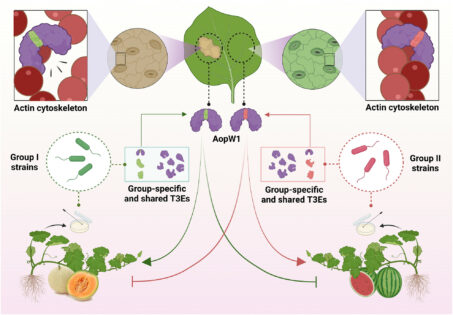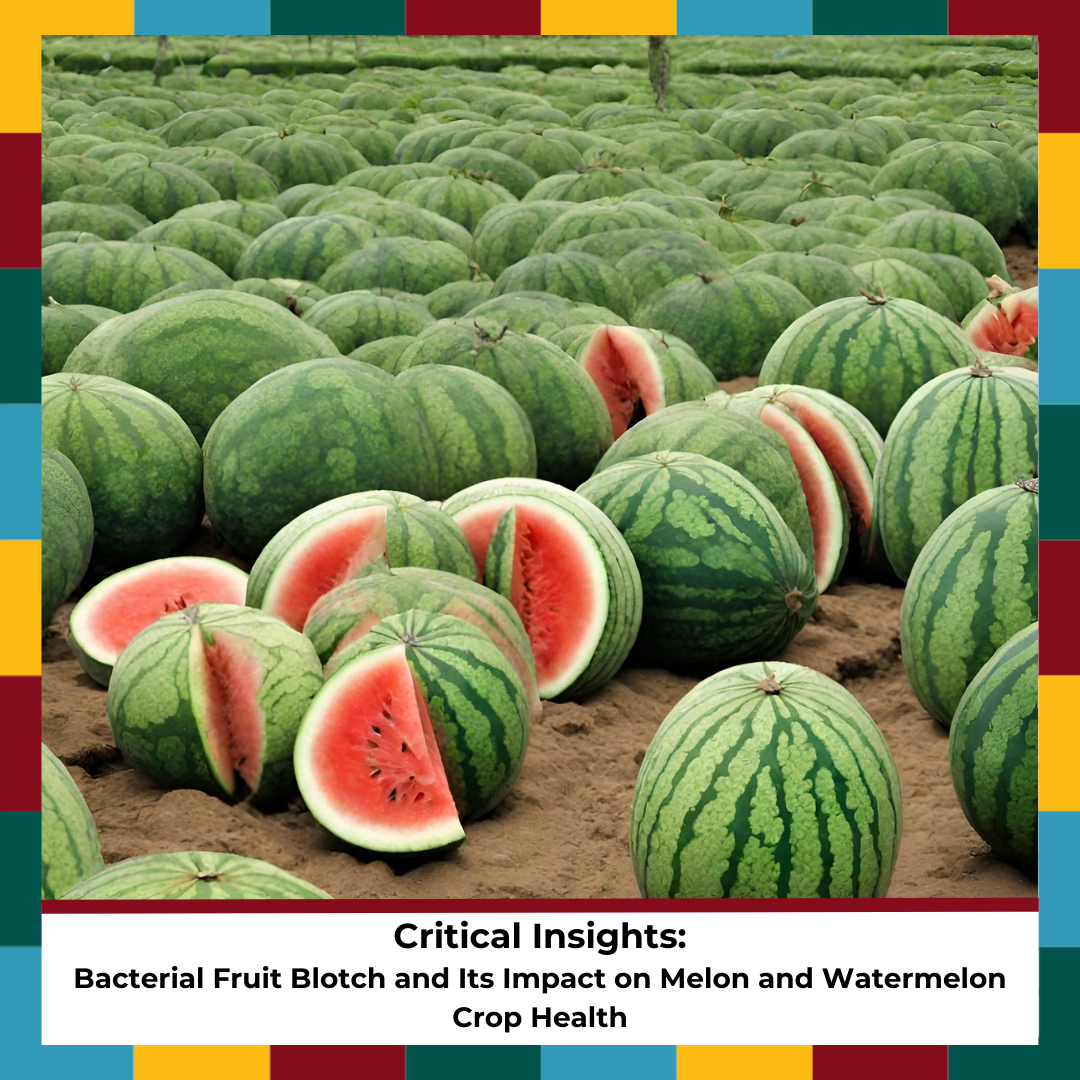A new study at the Hebrew University of Jerusalem unveils critical insights into bacterial fruit blotch, a severe disease affecting melon and watermelon crops. The research focuses on the role of the effector AopW1, shedding light on its significance in host adaptation and providing new perspectives on the HopW1 family of bacterial effectors
Jerusalem, Israel – Bacterial fruit blotch, caused by the bacterium Acidovorax citrulli, poses a significant threat to melon and watermelon cultivation. Strains of the pathogen can be classified into two major genetic groups, with group I strains being strongly associated with melon and group II strains having higher aggressiveness towards watermelon. Previous research at the Hebrew University, led by Prof. Saul Burdman from the Department of Plant Pathology and Microbiology at the Robert H. Smith Faculty of Agriculture, Food, and Environment, discovered that the two groups of strains differ in the arsenal of type-III secreted protein effectors. These are molecules that are secreted by the bacterium into the host cell where they manipulate its metabolism to promote disease. On the other hand, certain plant varieties may possess proteins are able to detect the activity of some of these effectors to promote resistance. The hypothesis is that differences in the arsenal of effectors are major determinants that shape host preferential association in A. citrulli towards melon or watermelon.
The study focused on one of such effectors, named AopW1. This protein has a highly variable region between amino acids 147 to 192. This region differs in 14 amino acids between strains belonging to the two A. citrulli groups. Group I’s AopW1 is more harmful to yeast and Nicotiana benthamiana cells, causing stronger disruption to cell structures, increased cell death, and reduced depositions of protective callose as compared to Group II’s AopW1.
Importantly, the research team demonstrated the significance of specific amino acid positions within this variable region for AopW1’s harmful effects. AopW1 was also found in different parts of host plant cells, including the endoplasmic reticulum, chloroplasts, and plant endosomes. Furthermore, the study unveils a novel aspect of the response to biotic stress by identifying the involvement of the endosome-associated protein EHD1, which, when overexpressed, it lessens AopW1-induced cell death and strengthens the plant’s defense mechanisms. Remarkably, inoculation experiments of melon and watermelon using group I and II wild-type and mutant strains, demonstrated that AopW1 not only plays a significant role in terms of contribution to virulence of both group I and II strains, but also contribute to shaping host preference of group I and II strains, towards melon and watermelon, respectively.
Prof. Saul Burdman expressed his excitement about the study’s implications, stating, “Our findings provide a deeper understanding of the mechanisms behind bacterial fruit blotch and offer valuable insights into host-pathogen interactions. This knowledge is crucial for developing targeted strategies to mitigate the impact of this threatening disease of melon and watermelon crops.”
This research not only advances our understanding of plant-pathogenic bacteria but also opens new avenues for developing innovative approaches to enhance crop resilience against bacterial fruit blotch.
The research paper titled “Natural variation in a short region of the Acidovorax citrulli type III-secreted effector AopW1 is associated with differences in cytotoxicity and host adaptation” is now available in The Plant Journal and can be accessed at https://doi.org/10.1111/tpj.16507.
Researchers:
Irene Jiménez-Guerrero1, Monica Sonawane1, Noam Eckshtain-Levi1, Za Khai Tuang1, Gustavo Mateus da Silva1, Francisco Pérez-Montaño1,2, Meirav Leibman-Markus3, Rupali Gupta3, Lianet Noda-Garcia1, Maya Bar3, Saul Burdman1
Institutions:
1) Department of Plant Pathology and Microbiology, The Robert H. Smith Faculty of Agriculture, Food and Environment, Institute of Environmental Sciences, The Hebrew University of Jerusalem, Rehovot, Israel
2) Department of Microbiology, University of Seville, Seville, Spain
3) Department of Plant Pathology and Weed Research, Agricultural Research Organization, The Volcani Institute, Bet Dagan, Israel
Pictures:
Title: Graphical Abstract
Description: Natural variation in a short region of the Acidovorax citrulli type III-secreted effector AopW1 is associated with differences in cytotoxicity and host adaptation.
Credit: Authors

Title: AopW1 co-localizes with plant endosomes in the plant cell.
Description: Endosomes are intracellular organelles in eukaryotic cells, which are involved in trafficking of molecules among subcellular compartments and play an important role in plant immunity. The images show co-localization of AopW1 from A. citrulli 7a1 with various endosome markers in Nicotiana benthamiana cells. AopW1 was labeled with a yellow fluorescent protein, while endosome markers were labeled with red (FYVE and Wave33) and blue (Ara7) fluorescent proteins.
Credit: Irene Jiménez-Guerrero

Disclaimer: In these challenging times of war and crisis, Hebrew University of Jerusalem is resolute in its dedication to advancing research and education. We stand in full support of the brave individuals on the frontlines, safeguarding our nation and the well-being of all Israelis, and extend our deepest gratitude and unwavering solidarity to our community and fellow citizens. Together, we shall prevail against the challenges that confront us, and our shared commitment to the well-being of all Israelis and the pursuit of knowledge remains resolute.
The Hebrew University of Jerusalem is Israel’s premier academic and research institution. With over 25,000 students from 90 countries, it is a hub for advancing scientific knowledge and holds a significant role in Israel’s civilian scientific research output, accounting for nearly 40% of it and has registered over 11,000 patents. The university’s faculty and alumni have earned eight Nobel Prizes and a Fields Medal, underscoring their contributions to ground-breaking discoveries. In the global arena, the Hebrew University ranks 86th according to the Shanghai Ranking. To learn more about the university’s academic programs, research initiatives, and achievements, visit the official website at http://new.huji.ac.il/en

